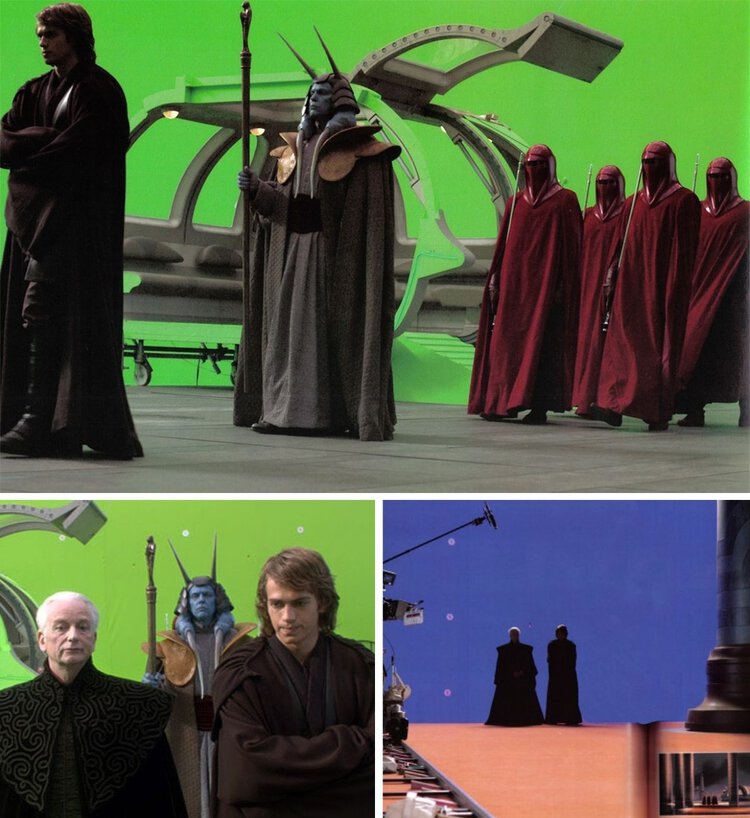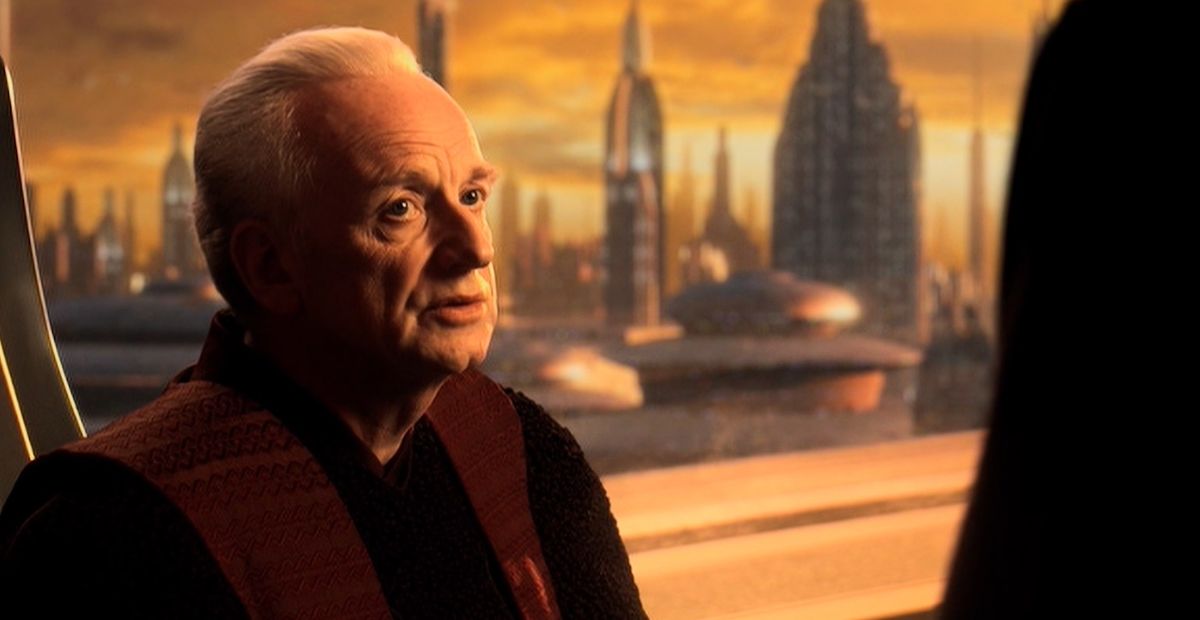When we think of Emperor Palpatine, we picture the cackling Sith Master pulling strings from the shadows, manipulating everyone until the galaxy crumbles right into his hands. But what if I told you his most sinister tricks weren’t even in the movies we saw?
In Revenge of the Sith, Palpatine’s manipulation of Anakin is already terrifying — but the deleted material shows him being even more ruthless. In these cut scenes, he doesn’t just turn Anakin against the Jedi Council. He goes after the two people Anakin trusts most: Obi-Wan Kenobi and Padmé Amidala. Watching how Palpatine plants those seeds of doubt makes his eventual fall to the dark side feel even more inevitable.
1. Palpatine Plays the Father Figure
One of the most insidious deleted scenes comes from an extended version of Palpatine asking Anakin to be his personal representative on the Jedi Council. In the film we only see the Chancellor’s casual line, “I hope you trust me, Anakin.” But originally, there was much more.
Palpatine opens by sounding almost fatherly, reminding Anakin that he’s known him since boyhood, praising his victories in hopeless battles, even saying outright that he saved his life. It’s the kind of validation the Jedi Council never gave Anakin, and Palpatine knows exactly how to weaponize it.
Then comes the twist of the knife: Palpatine tells him the Jedi keep him off the Council not because of age, but because they fear him. They see his potential, he says, and they know his power will grow beyond their control.
This is Palpatine’s true strategy, to create conflict between Anakin and the Jedi Order. By planting seeds of doubt, he positions himself between them, slowly driving a wedge that separates Anakin from the light side the Jedi represent. It’s the first step toward isolating him completely, so Palpatine can eventually guide him to the dark side.
It’s a brilliant manipulation. By mixing flattery with just enough truth, Palpatine makes himself the only person who seems to truly believe in Anakin.
2. Planting Doubt About Obi-Wan
Another deleted scene, set just after Obi-Wan departs to hunt General Grievous, shows Palpatine striking again. This time, he uses Anakin’s frustration over being left behind to widen the wedge between him and his master.
However, for the next scene we’re going to dive into, we don’t have any video to watch — only behind-the-scenes images and the original script.
So after saying goodbye to Obi-Wan, as we’ve seen in the film, right after that we almost got to see Palpatine quickly summoning Mas Amedda with four Royal Guards to visit him.

The Chancellor then calls Anakin aside, dismissing his Royal Guards so they can speak privately. He tells Anakin there are whispers in the Senate that Kenobi isn’t fit for the mission — that his judgment is clouded by a certain senator. Of course, he means Padmé, and the implication is clear: Obi-Wan is too close to her.
As shown in the script, here is the conversation between Anakin and Palpatine:
“PALPATINE
Well, Anakin, did you see your friend off?
ANAKIN
He will soon have Grievous’s head.
PALPATINE
We can only hope the Council didn’t make a mistake.
ANAKIN
The Council was very sure in its decision.
(They exit the landing platform.)
101 INT. CORUSCANT – SENATE OFFICE BUILDING – MAIN HALLWAY – DAY
They enter the main hallway of the Senate Office Building. They pass several senators, including Representative Jar Jar Binks from Naboo.
JAR JAR
Helloo Annie. Good en to see yousa…
(The Gungan waves to Anakin.)
ANAKIN
Hi, Jar Jar.
JAR JAR
Oopsin da Chancellor!! So sorry, Your Highness, sir.
(Anakin turns back to the Chancellor.)
PALPATINE
There are rumors in the Senate about Master Kenobi. Many believe he is not fit for this assignment.
ANAKIN
Not fit? Why would anyone think that?
PALPATINE
They say his mind has become fogged by the influence of a certain female Senator.
ANAKIN
That’s ridiculous. Who?!
PALPATINE (slyly)
No one knows who she is… only that she is a Senator.
ANAKIN
That’s impossible. I would know.
PALPATINE
Sometimes the closest are the ones who cannot see.
(Anakin becomes worried.)”
Throughout the conversation we can clearly see how Palpatine is trying to plant the idea of a “love affair” between Padmé and Obi-Wan in Anakin’s mind. This makes perfect sense when we connect it to the beginning of the Mustafar sequence, where Anakin is furious with Padmé after she mentions Obi-Wan.
3. Turning Padmé Into the Enemy
The last major cut material ties into the larger political subplot about Padmé and her fellow senators secretly forming what would become the Rebel Alliance. In the scene, Padmé and her delegation confront Palpatine directly, trying to slow his power grab. Anakin stands beside the Chancellor like a bodyguard, visually foreshadowing his future as Vader.
When the senators leave, Palpatine leans in once more. He warns Anakin not to trust them — especially Padmé. “She’s hiding something. I can see it in her eyes.” Anakin resists, saying he feels no betrayal in her, but Palpatine doubles down, making him question his own instincts.
By the time Anakin reaches Mustafar, these lies have stacked one on top of the other. Palpatine has convinced him that Obi-Wan is plotting behind his back, and that even Padmé might be keeping secrets. Nick Gillard, stunt coordinator for the prequels, once explained it this way: the duel between Anakin and Obi-Wan was written like a husband and wife’s fight, with jealousy and betrayal boiling under the surface. And it was Palpatine who orchestrated every single beat.

